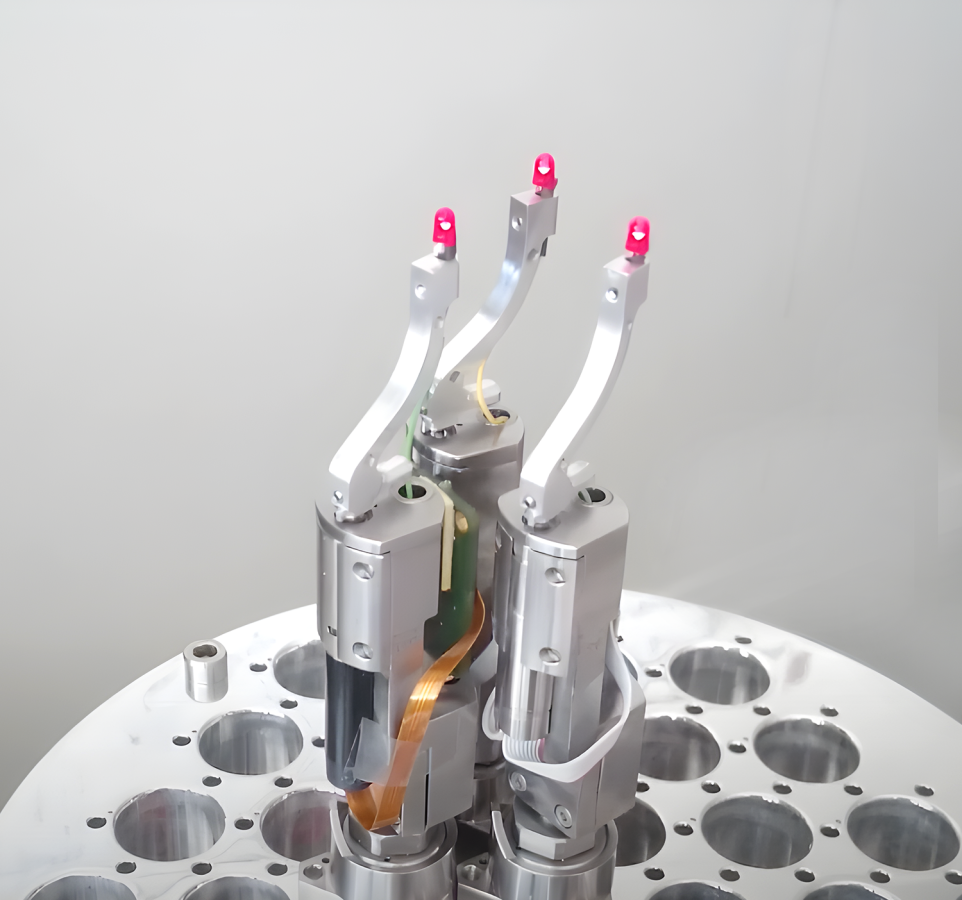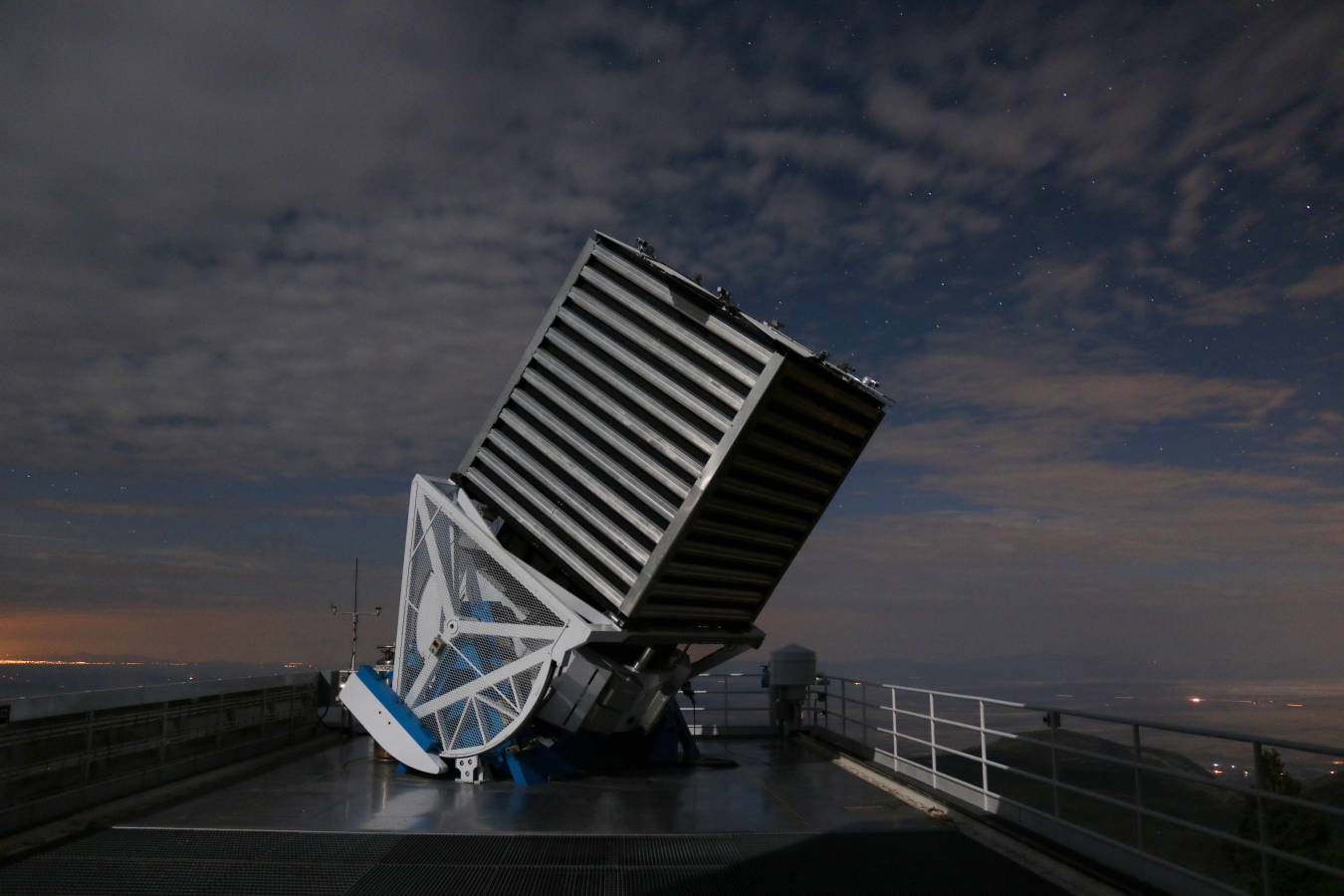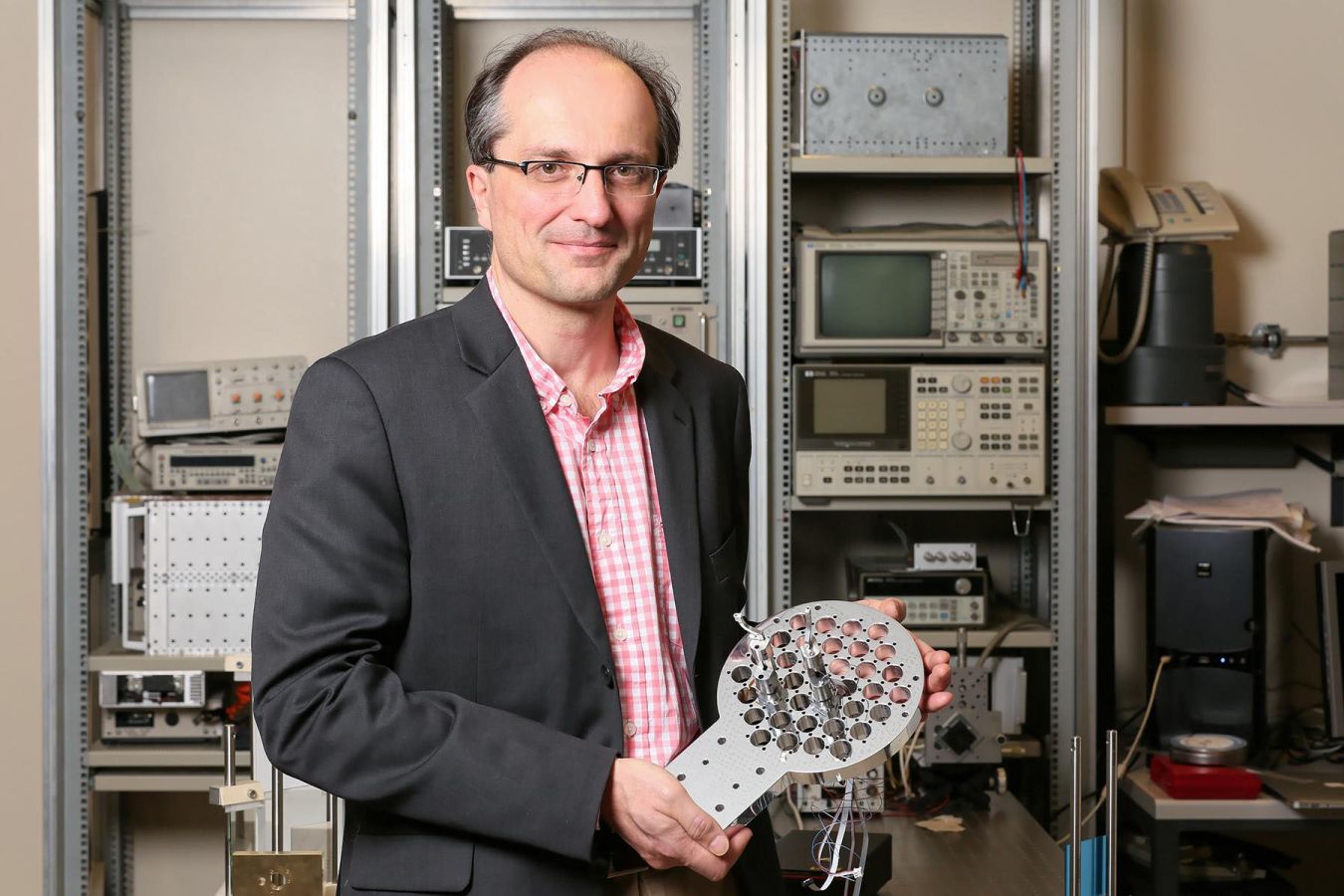LASTRO Astrobots
Despite their tiny dimension, the robots in this model play a crucial role in massive spectroscopy surveys such as the Sloan Digital Sky Survey (SDSS). This technology was specifically developed for most SDSS recent plates, which are augmented with fibre optic cables. Because surveys like these rely capture spectra using instruments that spread the light from a star or galaxy into wavelengths, fibre optics have radically transformed the methods used to scan the cosmos. Fed by optical fibres, a single spectrographic observation can measure the spectra of 600 galaxies and quasars as well as their distances from Earth.
Astronomers at EPFL and beyond are now in the process of calculating the 3D positions of 30 million or more galaxies. As it took three years to measure a million of them, it would take another eight to complete this task. Created by LASTRO Astrobots, these little “astrobots” not only precisely guide each cable to the position of the desired object but do so at a speed and exactitude no human could match to massively amplify the rate at which the SDSS telescope can scan the sky.

Courtesy of EPFL Astrobots and SDSS.

Courtesy of the Sloan Digital Sky Survey. CC-BY-0.3. Photo: Patrick Gaulme.

Courtesy EPFL LASTRO.